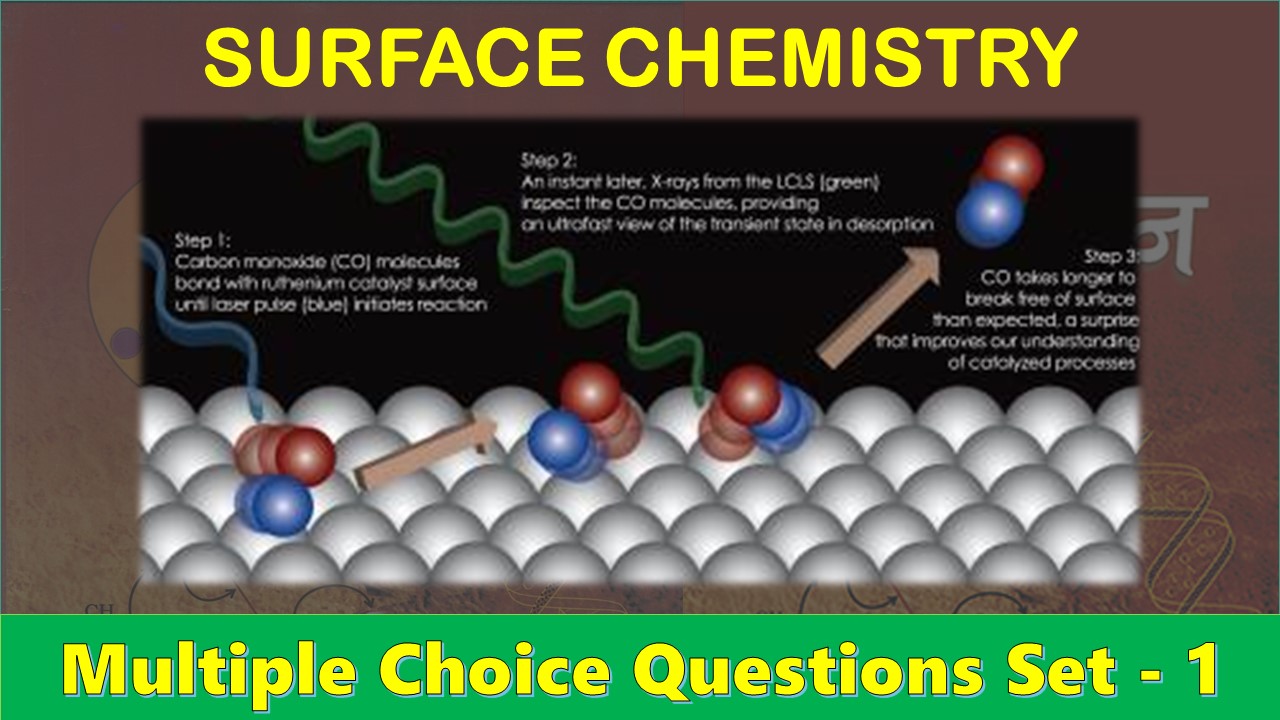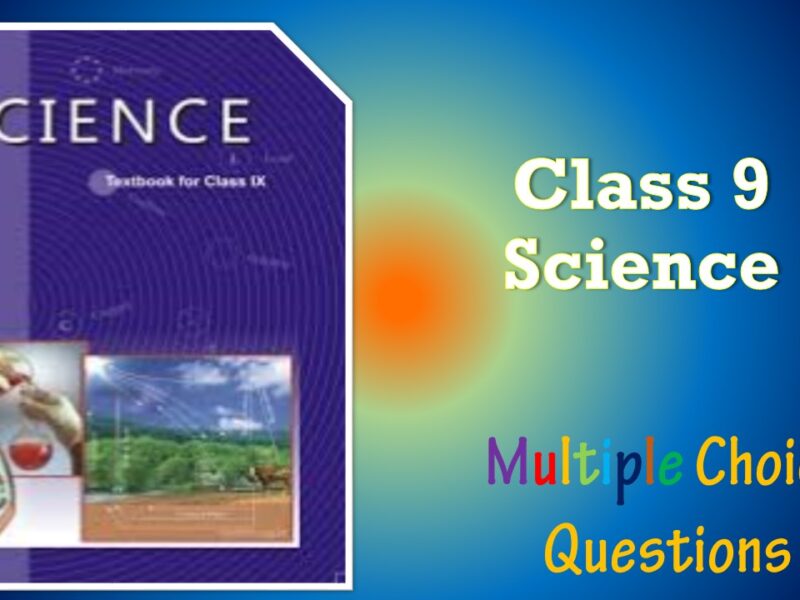CBSE Class 12 Surface Chemistry Multiple Choice Questions with Answers. MCQ Questions Class 12 Surface Chemistry with Answers Is Prepared Based on Latest Exam Pattern. Students can solve NCERT Class 12 Surface Chemistry MCQs with Answers to know their preparation level.
Students who are searching for NCERT MCQ Questions for Class 12 Surface Chemistry with Answers are compiled here to get good practice on all fundamentals. Know your preparation level on MCQ Questions for Class 12 Surface Chemistry with Answers. You can also verify your answers from our provided MCQ Class 12 Surface Chemistry with Answers. So, ace up your preparation with MCQ of Class 12 Chemistry Examinations.
MCQ Questions Class 12 Surface Chemistry with Answers - Set - 1
Question 1:
According to the adsorption theory of catalysis, the speed of the reaction increases because
(a) the concentration of reactant molecules at the active centres of the catalyst becomes high due to adsorption
(b) in the process of adsorption, the activation energy of the molecules becomes large
(c) adsorption produces heat which increases the speed of the reaction
(d) adsorption lowers the activation energy of the reaction.
Correct Answer – (D)
Question 2 :
Which one of the following statements is incorrect about enzyme catalysis?
(a) Enzymes are mostly proteinous in nature.
(b) Enzyme action is specific.
(c) Enzymes are denatured by ultraviolet rays and at high temperature.
(d) Enzymes are least reactive at optimum temperature.
Correct Answer – (D)
Question 3 :
Which is not correct regarding the adsorption of a gas on surface of a solid?
(a) On increasing temperature adsorption increases continuously.
(b) Enthalpy and entropy change is negative.
(c) Adsorption is more for some specific substance.
(d) It is a reversible reaction.
Correct Answer – (A)
Question 4 :
The Langmuir adsorption isotherm is deduced using the assumption
(a) the adsorption sites are equivalent in their ability to adsorb the particles
(b) the heat of adsorption varies with coverage
(c) the adsorbed molecules interact with each other
(d) the adsorption takes place in multilayers.
Correct Answer – (A)
Question 5 :
In Freundlich adsorption isotherm, the value of 1/n is
(a) between 0 and 1 in all cases
(b) between 2 and 4 in all cases
(c) 1 in case of physical absorption
(d) 1 in case of chemisorption.
Correct Answer – (A)
MCQ Questions Class 12 Surface Chemistry with Answers
Question 6:
The enzyme which hydrolyses triglycerides to fatty acids and glycerol is called
(a) maltase
(b) lipase
(c) zymase
(d) pepsin.
Correct Answer – (B)
Question 7:
Which one of the following statements is not correct?
(a) The value of equilibrium constant is changed in the presence of a catalyst in the reaction at equilibrium.
(b) Enzymes catalyse mainly biochemical reactions.
(c) Coenzymes increase the catalytic activity of enzyme.
(d) Catalyst does not initiate any reaction.
Correct Answer – (A)
Question 8:
A plot of log(x/m) versus log P for the adsorption of a gas on a solid gives a straight line with slope equal to
(a) log k
(b) –log k
(c) n
(d) 1/n
Correct Answer – (D)
Question 9:
If x is amount of adsorbate and m is amount of adsorbent, which of the following relations is not related to adsorption process?
(a) x/m = f (p) at constant T
(b) x/m = f (T) at constant p
(c) p = f (T) at constant (x/m)
(d) x/m = p ×T
Correct Answer – (D)
Question 10:
Which one of the following characteristics is associated with adsorption?
(a) DG and DH are negative but DS is positive.
(b) DG and DS are negative but DH is positive.
(c) DG is negative but DH and DS are positive.
(d) DG, DH and DS all are negative.
Correct Answer – (D)
- NCERT Solutions Class 11 Chemistry Chapter 1 : Some Basic Concepts of Chemistry
- NCERT Solutions Class 11 Chemistry Chapter 2 : Structure Of The Atom
- NCERT Solutions Class 11 Chemistry Chapter 3 : Classification of Elements and Periodicity in Properties
- NCERT Solutions Class 11 Chemistry Chapter 4 : Chemical Bonding and Molecular Structure
- NCERT Solutions Class 11 Chemistry Chapter 5 : States of Matter
- NCERT Solutions Class 11 Chemistry Chapter 6 : Thermodynamics
- NCERT Solutions Class 11 Chemistry Chapter 7 : Equilibrium
- NCERT Solutions Class 11 Chemistry Chapter 8 : Redox Reactions
- NCERT Solutions Class 11 Chemistry Chapter 9 : Hydrogen
- NCERT Solutions Class 11 Chemistry Chapter 10 : The s-Block Elements
- NCERT Solutions Class 11 Chemistry Chapter 11 : The p-Block Elements
- NCERT Solutions Class 11 Chemistry Chapter 12 : Organic Chemistry: Some Basic Principles and Techniques
- NCERT Solutions Class 11 Chemistry Chapter 13 : Hydrocarbons
- NCERT Solutions Class 11 Chemistry Chapter 14 : Environmental Chemistry



